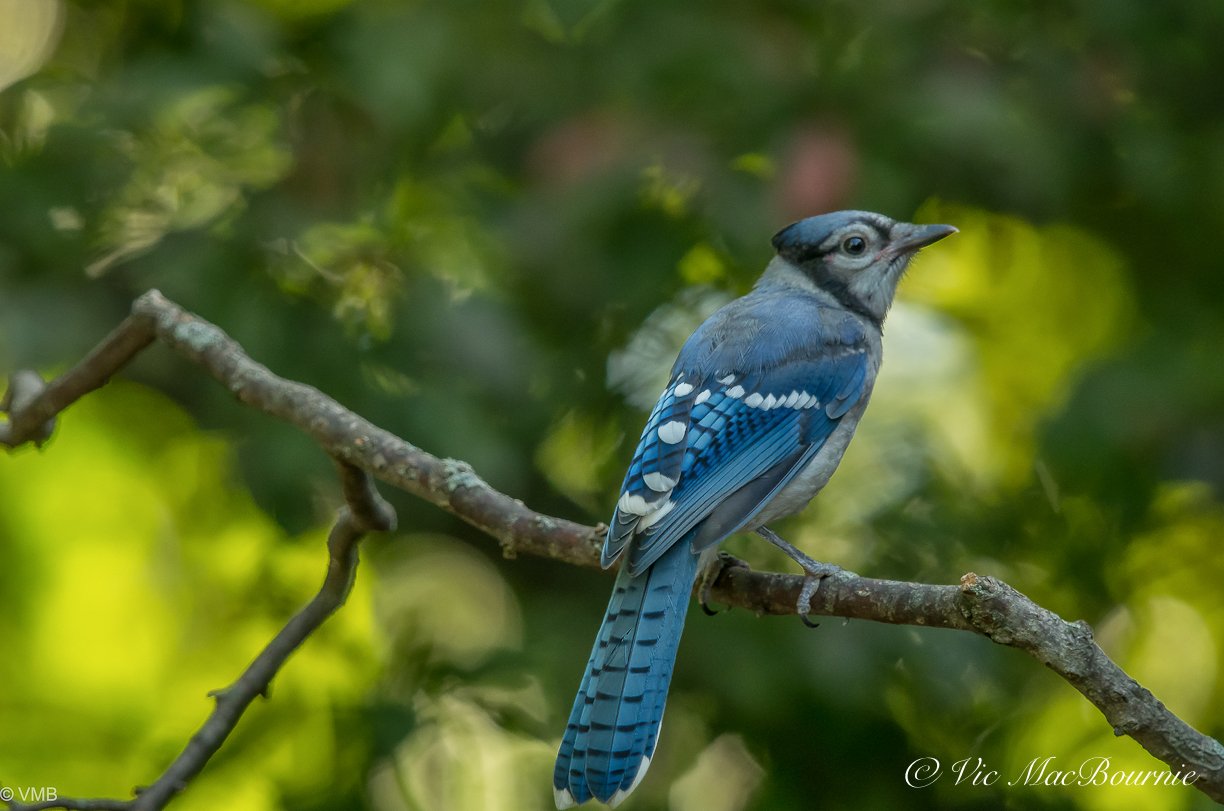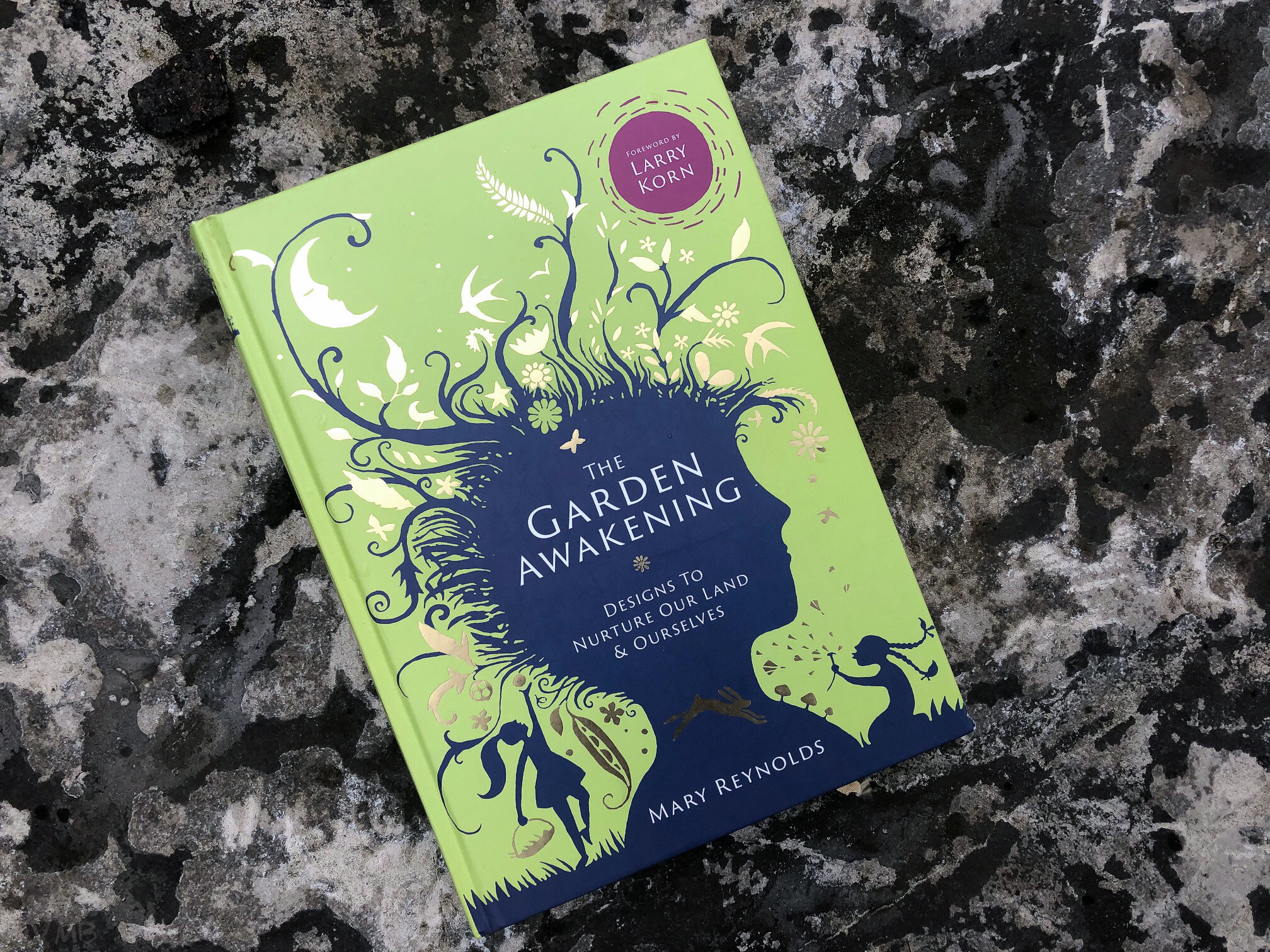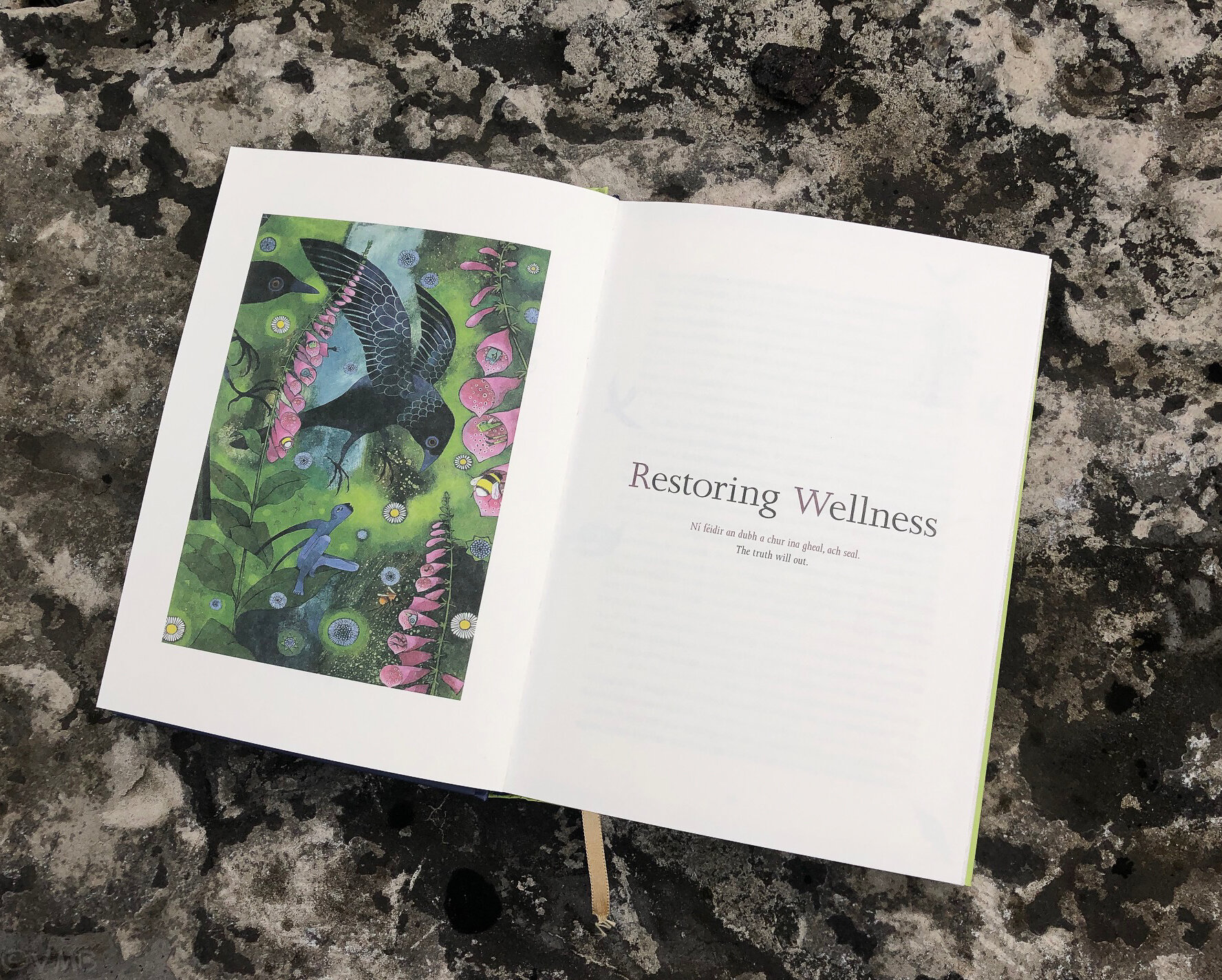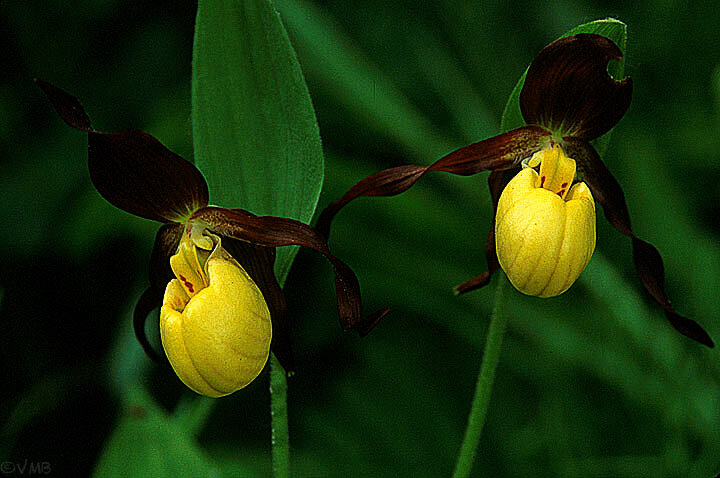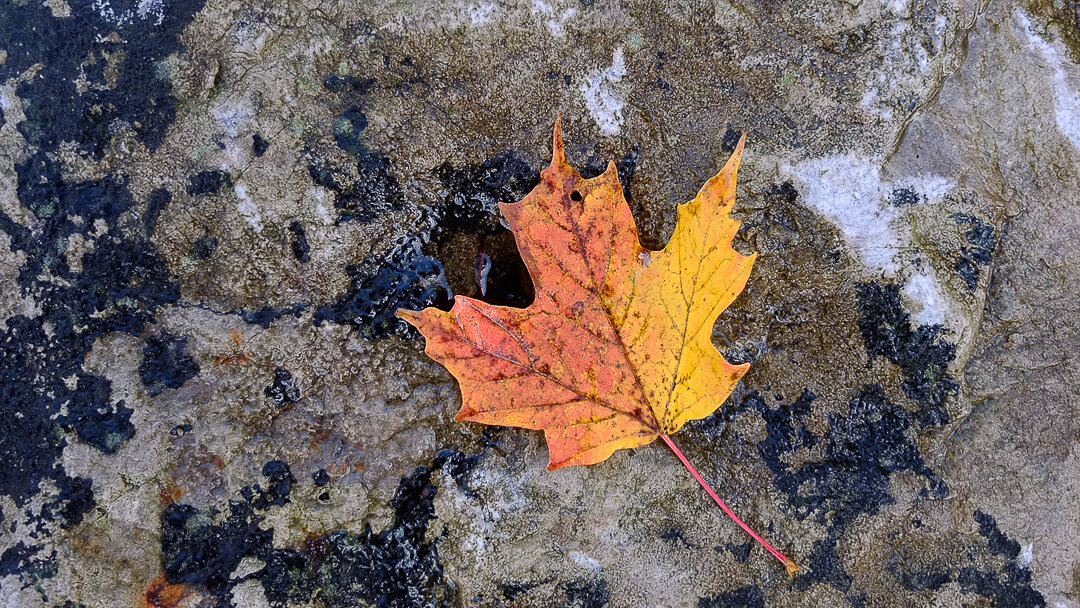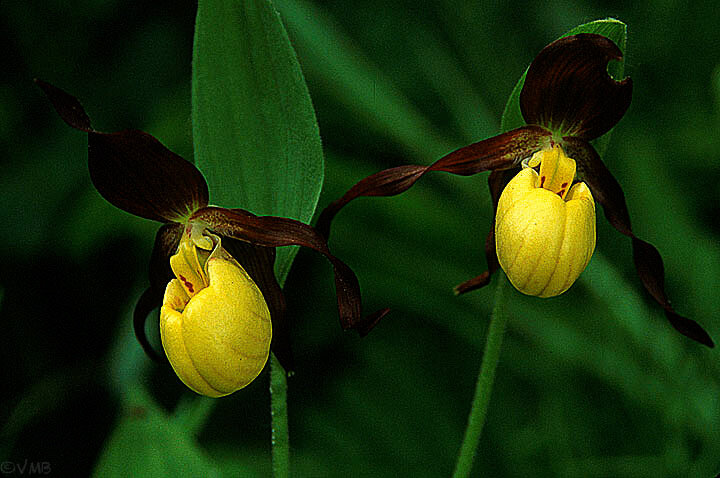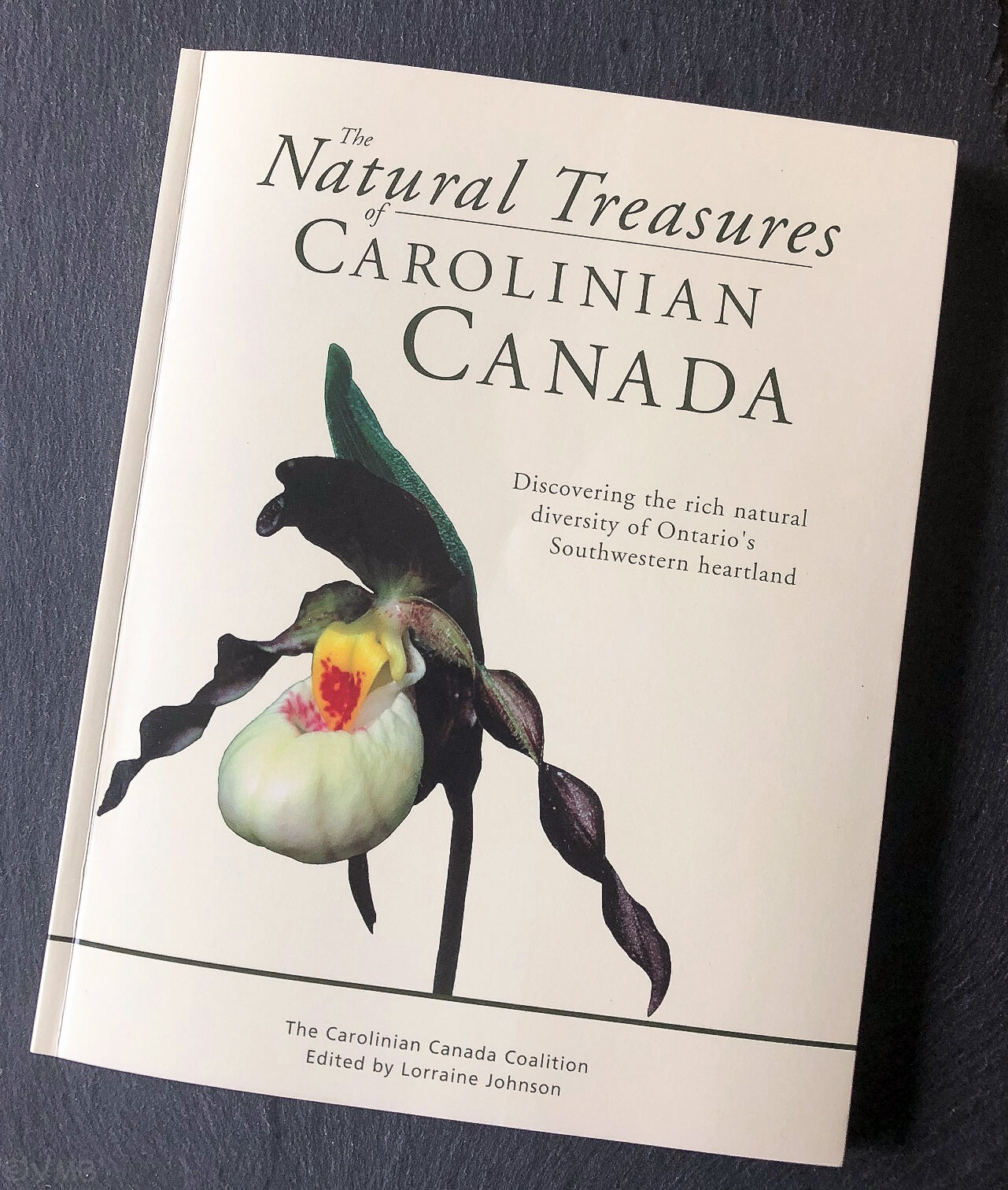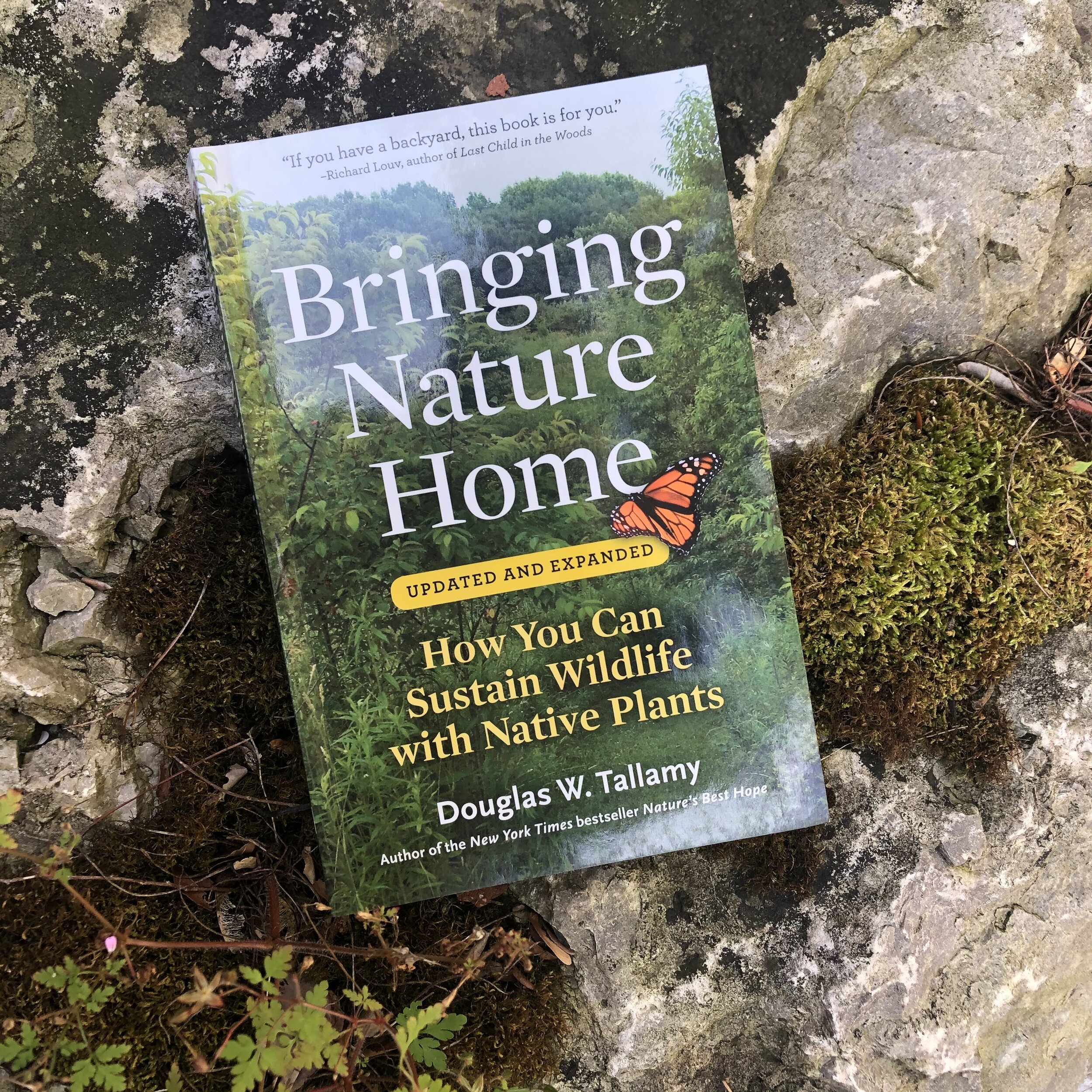Five of the best backyard birding books
Winter is approaching an time for woodland gardeners to change focus from their gardens to backyard birds and wildlife. Here are five outstanding books that will help birders get the most out of their backyard feeders by attracting the greatest number and variety of birds to their backyard.
Tips to attract more birds to your backyard
Winters can be hard on us, but have you ever wondered what our feathered friends go through when the temperatures drop and snow covers the ground and their normal sources of food?
For birds and other wildlife, winter is a difficult time and finding a reliable source of food often becomes a matter of life and death.
As more and more native plants disappear, bird feeders become more and more important to backyard birds.
In our garden, many of the traditional backyard birds are already busy stockpiling sunflower seeds in every nook and cranny they can find, whether its tree bark or tucked between crevices in garden benches and other secret backyard hideouts known only to them.
How successful we are in attracting birds and wildlife depends on many factors. Thankfully, many of these factors are within our control.
Providing habitat for our feathered friends, for example, is an ongoing project created over time. There are steps, however, we can take immediately to provide a safe haven for our woodland wildlife. A brush pile (click here for earlier post) is one such addition that will help bring in a greater variety of birds including owls and other predators (click for earlier post on attracting owls) that will begin to see it as a source of food in the form of mice and other small critters that call it home.
If you are looking to purchase one of these books, or any Gardening or birding book for that matter, be sure to check out the incredible selection and prices at alibris books.
Native plants that include berries and fruit will attract fruit-eating birds and mammals that may not be attracted to our bird feeders. Please take a moment to read my complete story on using native plants in our garden
Winter is also the ideal time to learn more about helping out the wildlife that either call our gardens home or visit it on their neighbourhood rounds. The following are five of the best books available for backyard bird watchers and those who want to attract more of them to our yards. They are conveniently linked to Amazon, but many can be found or ordered through your local bookseller.
Alibris is an umbrella group of independent booksellers from the U.S. and the U.K. that provide exceptional deals on used books and music. Be sure to Also check Alibris for great prices on new and used books.
1) All About Backyard Birds: Eastern and Central regions.
Available in paperback new and used.
Most birders are familiar with the Cornell Lab of Ornithology’s excellent birding website and handy app on their smartphone. In fact, I doubt there are many serious birders who are not using the handy birding app to help us identify unusual birds in our garden either by sight and unusual markings, or through their many songs and calls. This book is based on that website, which has had more that 14 million unique users to date.
It’s perfect for a new birder, young and old.
The highly regarded book, published in 2017, has an impressive has a very positive rating with 60 on-line ratings.
The publisher notes that the book: “delivers best-in-class content and proven user-friendly formats. Each regional version – eastern/central North America and western North America – provides 120 of the most popular species and is filled with beautiful illustrations by Pedro Fernandes. With charts, maps, and other bird identification tools, All About Backyard Birds offers beginner birders the ideal way to start birding.”
The book also includes a tutorial for the MERLIN app (available for free on line) already being used by more than 1 million birders.
A portion of the net proceeds for the sale of the book goes directly to the Cornell Lab to support projects, including children’s educational and community programs.
2) National Geographic Backyard Guide to the Birds of North America, 2nd Edition.
Available in paperback both new and used for very reasonable prices.
This is another top notch general source for backyard birders, and it’s hard to go wrong with any product from National Geographic. For travellers, at least in North America, this guide offers an excellent source of information.
The publisher writes: “This comprehensive and beloved guide reveals the most ubiquitous and remarkable species of North American birds, clearly organized by family and paired with identification tips, behaviour, vocal descriptions, and more. The new edition features a "Backyard Basics" section from the world's most prolific birdwatcher, Noah Strycker, with tips on attracting and feeding your favourite birds and creating bird-friendly landscapes. Also included are updated descriptions of 150 common North American species, paired with comprehensive range maps, as well as lush indentification artwork and bite-sized facts. With new contributions from Strycker and a modern redesign, the second edition of this perennial favourite will appeal to new and experienced bird enthusiasts alike.
3) The Backyard Bird Feeder’s Bible: The A-to-Z Guide To Feeders, Seed Mixes, Projects And Treats.
Available in both hardcover and paperback both new and used formats.
Rodale has always been a strong publisher when it comes to gardening books. I have a number of them that I go back to on a regular basis. In fact, Landscaping with Nature, Using Nature’s Designs to Plan Your Yard by Jeff Fox published by Rodale Press, was my go-to book for planning and designing much of my woodland gardening book going back at least ten years ago. The book explains the fine details of creating a natural garden right down to using classical music to place large boulders in your garden. It’s proven to be a very valuable resource.
The author of the Backyard Bird Feeder’s Bible, Sally Roth, will help guide backyard birders to focus on which foods attract which birds, hints on choosing and maintaining feeders and the best native fruit-bearing trees, flowers and shrubs to plant to attract birds.
The publisher writes: Pull up a chair next to the window looking out on your bird feeder and join author Sally Roth in an informative, inspirational, and often light-hearted look at the foods, feeders, and plants that invite birds to visit your feeding station.”
The author shares a lifetime’s worth of bird-feeding experience including how to identify birds at your feeder, and what foods are best for certain birds. She also includes tips on improving the attraction of your garden to birds.
4) National Wildlife Federation: Attracting Birds, Butterflies, and Other Backyard Wildlife, Expanded Second Edition.
Another outstanding book by the highly regarded National Wildlife Federation. It’s available in both Kindle and paperback forms, new and used for a very reasonable price.
If you are not familiar with the National Wildlife Federation, it is the largest U.S. nonprofit conservation organization, with 6 million members and 51 state affiliated organizations.
This book takes backyard birding to another level by urging readers to – not unlike this blog – create a backyard that is more nature-friendly by providing habitats for local wildlife, not just birds. The book includes 17 step-by-step projects that brings the entire family back to nature with easy projects. The book explores wildlife-friendly practices and how to attract backyard pollinators.
The reward from following the many ideas in the book is not only a more wildlife-friendly yard, is a blueprint for getting your garden certified by the National Wildlife Federation’s Garden for Wildlife program by following the certification application checklist that is included in the book. A worthwhile investment in its own right and one that our garden qualified for a number of years ago.
The publisher writes: Your backyard can come alive by creating an environment with plants and spaces that attract nature’s most interesting and friendly creatures! Colourful butterflies, uplifting songbirds, and lively toads can enhance your personal garden space, giving pleasure to nature lovers of all ages.”
“Author David Mizejewski, a naturalist with the National Wildlife Federation, presents simple plans for reintroducing native plants that birds, butterflies, and a whole host of critters can't resist.
5) The Humane Gardener: Nurturing a Backyard Habitat for Wildlife (How to Create a Sustainable and Ethical Garden the Promotes Native Wildlfie , Plants, and Biodiversity.
Nancy Lawson’s the Humane Gardener is a must for any gardener who cares about attracting wildlife to their backyard, whether its birds, mammals or creepy crawlies. Her new book Wildscape is another book serious natural gardeners will want to add to this list.
Click on the link for my complete review of her book The Humane Gardener. Click on this link for my review of her book Wildscape.
Available in Kindle format and hardcover both new and used at a very reasonable price.
The book follows much the same philosophy as this woodland garden blog: one that focuses on a “practical guide for the gardener who hopes to create a backyard in harmony with nature.”
The author, Nancy Lawson, examines why and how to welcome wildlife to your backyard through profiles of home gardeners as well as interviews with scientists and horticulturalists.
The book includes information on planting for wildlife by choosing native plants, providing proper habitats for animals as well as birds, bees and butterflies and encouraging natural processes and evolution in your garden.
Finally she explores the “humane gardener,” who she describes as someone who attracts wildlife and peacefully resolve conflicts with all the creatures that may inhabit your garden. The humane gardener, she concludes, “is someone who sees the garden as a meeting place for all creature, not a territory to be defended.”
Isn’t that the way we all want to garden?
Author Profile: Vic MacBournie is a former journalist and author/owner of Ferns & Feathers. He writes about his woodland wildlife garden that he has created over the past 25 years and shares his photography with readers.
The Garden Awakening will change the way you garden
Mary Reynolds’ The Garden Awakening is an important book during these troubled times. It is both a gardening book and a road map we all need to follow into the future. For some it is a treasure map to help them rediscover nature and themselves. For others, it will provide them with a new way of looking at their gardens, their land and their life. Please, click on the link for the full review.
The Garden Awakening
Designs to Nurture our Land & Ourselves
By Mary Reynolds
“If nature is left to its own devices and without imbalances in the ecosystem such as the overpopulation of hungry deer or an infestation of rabbits it will reclaim its territory and become Woodlands once more.”
This might be one of the most inspirational gardening books I have ever read.
It’s certainly not your average how-to gardening book. If you are looking for a typical gardening book, The Garden Awakening might not be for you.
Beautiful illustrations by artist Ruth Evans both on the cover and throughout the book.
But if you are interested in the environment, restoring your garden to a healthy, productive space and/or creating a Woodland naturalized garden, then you owe it to yourself to spend some time with Mary Reynold’s book, The Garden Awakening, Designs to Nurture our Land & Ourselves and her vision for the future of gardening.
Since this writing, Ms Reynolds has published a second informative book titled We Are The Ark. This follow to The Garden Awakening, expounds on her successful approach that each garden can be a small Ark in a world for where wildlife desperately needs our help.
For more information on using native plants to restore your garden, take a moment to check out my article on the importance of using native plants in your garden. For full post go here.
An important book at a crucial time
The Garden Awakening is an extremely important book for the time. It’s a reminder that we are destroying the very land we depend on for survival. It’s a reminder that the world we live in cannot continue to absorb this abuse and not unleash its own fury back upon us.
And, as climate change continues to change the world we live in, it’s important that we as inviduals take action to stem the tide.
But Reynolds offers solutions to problems that we need so desperately in these trying times.
Her inspirational book actually provides a roadmap for anyone interested in doing their part to not only protect but revive the land they live on. Along the way, she provides a “treasure map for finding your way back to the truth of who you are.”
“We are the ark” movement
Be part of the movement
Her movement, “We are the Ark” is bringing together like-minded people around the world to join her in creating a healthy environment, one garden at a time. It provides an important stepping stone to a better environment, a healthier garden and a more optimistic future.
“Gardens were like still-life paintings; controlled and manipulated spaces.... somehow, somewhere along the way gardens had become dead zones.”
If Ireland’s feisty Mary Reynolds is not familiar to you, I suggest you watch a movie called Dare to Be Wild, which maps her journey from an outsider to a gold-medal winner at the prestigious Chelsea Flower show. The movie used to be available on Netflix, but I notice that it is no longer available. (The link provided above will take you to Amazon where it is available as a DVD.)
The movie led me to her book, her vision and her unique and thoughtful approach to gardening.
To purchase the Mary Reynold’s book, here is a link from the excellent book seller Alibris: Books, Music, & Movies for The Garden Awakening. Below is the Amazon link.
For those without access to the movie, take note; Mary Reynolds was the youngest garden designer to win the highly coveted gold at the 2002 Chelsey Garden Show. That alone should be enough to interest you in her book.
Reynolds doesn’t waste much time getting to the point. She describes a vision of her embodying a crow flying over the landscape where she comes across a woman (let’s call her Mother Nature) in a forest clearing. She is then swept up high into the heavens and when she finally wakes up she comes to the instant recognition that she “shouldn’t make any more pretty gardens.”
She realizes that she must be guided by the natural world, rather than pure beauty, in her work as a garden designer.
Unlike nature, “gardens were like still-life paintings; controlled and manipulated spaces.... somehow, somewhere along the way gardens had become dead zones,” she writes.
Being in harmony with nature
The revelation that she was “failing to work in harmony with nature,” eventually leads her to unveil 5 garden design ideas in a system aimed at helping anyone, including gardeners, connect with nature.
Throughout the book, Reynolds returns to her Irish roots and uses folklore to help explain her spiritual views of nature and gardening.
Of particular interest to Woodland gardeners, Reynolds explains that all land strives to become a mature Woodland and the job of the gardener is to allow the land to become what it desires to be.
She also encourages people to design their own gardens and provides a road map in five chapters. Each chapter slowly opens up the world of garden design and includes suggestions for intimate garden areas; a nighttime place, a praying place, a gathering place…
In another chapter, she talks about designing with the patterns and shapes of nature. This all leads to a chapter encouraging readers to put their garden design concepts onto paper, including several illustrations and designs that help readers visualize their garden design ideas.
Throughout the book, Reynolds offers suggestions on plants, although these plants might not all be appropriate for all garden zones.
The book wraps up with a chapter on Forest Gardening, a style of gardening that seems to be once again gaining in popularity and importance.
Many would say that Forest gardening is a logical extension to Woodland gardening. It involves producing food by developing a multi-tiered Woodland where berries, nuts and root vegetables are encouraged to be grown.
Her forest garden includes seven layers beginning with the upper canopy including a shrub layer, a layer for herbaceous plants a ground cover layer, an underground layer and finally climbers or vines.
This is a book every Woodland gardener will enjoy and learn from. It’s a book that should be required reading for all gardeners at a time when our futures may well depend on it.
If you are interested in having Mary Reynolds help design your garden virtually, be sure to check out my post on Ms Reynolds’ virtual makeovers.
Carolinian Canada is a diamond in the heart of Southern Ontario
Carolinian Canada is a sweep of land that extends from Toronto to Lake Erie and down through Windsor to Lake Huron. Its diversity of flora and fauna is unmatched anywhere else in Canada. The Carolinian forest also stretches through much of Eastern United States.
A Woodland Gardener’s journey of discovery
I am not sure when my love of gardening took root.
Two factors, however, played a major role in both my love of gardening and how I came to appreciate a Woodland Garden over, let’s say, a more formal style of gardening.
I was in my mid-twenties and working at a large weekly newspaper in the the metro Toronto area when I got my first real taste of the joy of gardening. I remember interviewing the president of the local garden club, touring his lovely suburban garden and sharing in his excitement for the diversity of flowers, shrubs and trees that grew in his garden. It definitely was not a Woodland garden but it left a big impression.
At the same time I was getting more and more involved in nature photography and my weekends were often spent wandering the local forests looking for wildflowers and other subjects that caught my eye. As my photographic knowledge grew, so did my appreciation for the more wild areas where I lived. Photographing trilliums, dog-toothed violets, hepatica, bloodroot and the ultimate photographic subject – native lady slipper orchids – became a spring ritual. In the summer months, our focus shifted to reptiles and mammals that seemed abundant in the ponds, rivers and forests that my photographic friends and I explored.
Fall, of course, was the magical time for Ontario photographers and nature lovers when the forests were blanketed with the spectacular reds, oranges, yellows and ambers of the season.
Carolinian Canada is an important ecosystem in Ontario that needs Woodland gardener’s assistance.
What I didn’t know at the time was that the driving force behind all of this was the fact I lived in one of the most beautiful, diverse and fascinating areas in Ontario. At the time it was just the forest. I later learned that it wasn’t “just a forest,” it was a very specific type of forest that made it special.
It was the Carolinian Canada forest.
Carolinian Canada is a rare gem
It’s a stretch of forest that sweeps from Lake Erie to Toronto, just kisses Guelph and Kitchener-Waterloo before heading up to Windsor and Lake Huron. Carolinian Canada boasts a diversity unmatched anywhere else in the country. From its unusual variety of trees to its rare plants, birds, mammals, insects, amphibians and reptiles, Carolinian Canada is certainly a nature lovers dream.
The Carolinian Canada forest is characterized by the predominance of deciduous trees and actually stretches well into the United States from the Carolinas, through the Virginias, Kentucky, Tennessee, Maryland, Delaware, Pennsylvania, parts of Ohio and New York state to name just a few. In the U.S., the Carolinian zone is commonly called the “Eastern Deciduous forest.”
Yellow lady slippers
Carolinian Canada includes primarily the gardening zones 6-7 and share many of the same fauna and flora.
Trees of note include hickory, oak, walnut, and the tallest of the lot, the tulip tree. In addition, there are the understory trees featuring native dogwood (cornus florida) and the pawpaw tree with it’s large, exotic fruit that tastes very similar to a mango.
In Southern Ontario the presence of the Great Lakes and their moderating influence creates the environment necessary to boast the longest frost-free seasons and the mildest winters of any region in the province.
The outstanding features of the Carolinian Forests in Ontario is also its downfall. The climate, fertile soils and proximity to large fresh-water lakes means that Carolinian Canada is highly developed and includes some of Canada’s most populated cities, intensively farmed agricultural areas and heavy industrialized locations. All this intensive settlement, industrialization and agriculture has led to significant habitat loss and fragmentation, leaving scattered and disconnected parcels of land left to carry on the natural ecology that makes up this important ecosystem.
The Natural Treasures of Carolinian Canada, published by James Lorimer& Company Ltd., is an outstanding resource for Woodland Gardeners who want to explore the Carolinian Canada forest more fully.
I was fortunate enough to be awarded this book as part of being recognized by the Hamilton Conservation Authority Watershed Stewardship Program for the efforts my wife and I have made on our property to care for the land in such a way to maintain a healthy state for today and for future generations. More on that in a later blog.
I took the time this winter to study this almost 150-page book. The book is edited by native plant expert Lorraine Johnson with individual chapters written by experts including naturalists and scientists working at World Wildlife Fund, the Nature Conservancy of Canada, The Royal Ontario Museum as well as many universities and government natural resources ministries.
It explores in great depth the various ecosystems within Carolinian Canada from the plants to the forests, the prairie peninsula and the wetlands. In chapter two, the authors focus on the fauna everything from badgers (yes there are badgers in Norfolk county) and flying squirrels to the birds, butterflies, amphibians and reptiles.
Finally, the authors turn their attention on stewardship and how humans can reshape the land and ecosystem they have played a major role in destroying, or at least bringing to the edge of distinction. These are important chapters; ones that, as Woodland gardeners, we have the opportunity to play a vital role in reshaping.
Woodland gardeners have a say in Carolinian Canada’s future
Whether we garden in a sensitive and highly threatened ecosystem like Carolinian Canada, a prairie grassland, the rolling hills of the mid-west or a desert landscape, all gardeners, but especially Woodland gardeners have the ability to influence the future of these important places.
Wherever you live and garden, there are organizations that work to protect the natural environment. Gardeners fortunate enough to live in Southern Ontario can take advantage of the vast resources and expertise that exists at Carolinian Canada, whose mission is to “advance a collaborative conservation strategy for healthy ecosystems in Ontario’s Carolinian Life Zone.”
The organization’s diverse network works to advance a “strategic ‘Big Picture’ vision for healthy landscapes and a green future in Canada’s deep south.”
Its website (see link above) states that since 1984, Carolinian Canada Coalition has been a leading ecoregional group, bringing together thousands of people and groups who care for the unique habitat network, and to support thriving wild and human communities in harmony for generations.
For our part, my wife and I do our best to plant native trees, shrubs and flowers, but we do not get too hung up on planting only natives. We try to plant fruit- and nut-bearing trees and plants to help local fauna. We put up bird houses on the property, have both above-ground bird baths and on-ground water sources for birds, amphibians and mammals and have a large debris pile to give mammals, reptiles and insects places to harbour over the winter. We have removed all the grass from our front yard and most of it from the back yard. (What’s left in the back yard is a combination of moss, wildflowers with a little lawn mixed in.) Chemicals are rarely used and branches, leaves and garden debris never leave the site.
Not everyone has the space or are willing to keep all the leaves and garden debris on-site, but if we all make an effort to do the best we can, we can play a significant role connecting these fragmented wilder areas and provide corridors for birds, mammals and flora to prosper even in some of the most built-up areas imaginable.
This concept is what Irish garden designer, naturalist and renowned author Mary Reynolds promotes with her gardening-inspired movement We Are the Ark and her book Garden Awakening, which was reviewed on this site in the previous blog.
Woodland gardeners have been building ARKs (Acts of Restorative Kindness) for years. Now we have a reason to celebrate our efforts and work to convince others to join us in celebrating the natural forests where we live.
More links to my articles on native plants
Why picking native wildflowers is wrong
Serviceberry the perfect native tree for the garden
The Mayapple: Native plant worth exploring
Three spring native wildflowers for the garden
A western source for native plants
Native plants source in Ontario
The Eastern columbine native plant for spring
Three native understory trees for Carolinian zone gardeners
Ecological gardening and native plants
Eastern White Pine is for the birds
Native viburnums are ideal to attract birds
The Carolinian Zone in Canada and the United States
Dogwoods for the woodland wildlife garden
Bringing Nature Home by Douglas Tellamy
A little Love for the Black-Eyed Susan
Native moss in our gardens
This page contains affiliate links. If you purchase a product through one of them, I will receive at commission (at no additional cost to you)I only endorse products I use, have complete confidence in or have experience with the manufacturer.
Going Native: Saving nature one backyard at a time
Bringing Nature Home is a book every gardener needs to read. The book is a rich resource for woodland gardeners looking to better understand the importance of native plants in our environment and the dangers of using exotics. It is a comprehensive blueprint for how gardeners can use native plants to sustain wildlife
Bringing Nature Home: Sustaining wildlife with Native Plants
There is plenty to be optimistic about in Douglas Tallamy’s book, Bringing Nature Home and it all begins with the importance of planting native plants, trees and shrubs in our gardens.
But finding this optimism is not easy.
For my extensive article on why using native plants in your garden is important, go here.
Tallamy tells the truth and it’s a truth that will make most gardeners very uncomfortable about what we’ve planted in the past and what is now happily growing in our gardens right now.
The must-have ornamentals, the pest-resistant perennials and the trees and shrubs we probably never suspected were problematic in the landscape are creating the conditions for the slow but steady decline not only of native plants but the entire ecosystem that depend on them for survival.
Scary stuff for sure, but critical reading for anyone who cares about the environment and what awaits future generations.
Remember, I said there’s lots to be optimistic about in the book. It’s important to note that the its full title is “Bringing Nature Home. How You Can Sustain Wildlife with Native Plants.” The book proves to be a rich resource for combating the incredible damage we have inflicted on our land and the wilder places that surround us.
For more on the importance of oak trees in our garden and natural landscapes take a few moments to check out my other posts on Oak trees:
This recent book release is an updated and expanded version of the same book that was first published in 2007.
Tallamy goes to great lengths in the opening chapters to explain the enormous problems we face following the slow and steady introductions of exotic, alien plants, pests and disease brought to North America – sometimes by mistake but often through the nursery trade. The problem these exotic ornamentals bring are twofold: One, they fail to deliver the same nutritional benefits to our insects as native plants, and; Two: many of these alien plants have displaced once dominant native plants in our gardens and in the wild.
The result is devastating to a host of native insects, reptiles, animals and birds.
How we can restore native habitats
Tallamy concludes that all the points in his book converge in a common theme: “we humans have disrupted natural habitats in so many ways that the future of our nation’s biodiversity is dim unless we start to share the places in which we live – our cities and, to an even greater extent, our suburbs – with the plants and animals that evolved there. Because life is fuelled by the energy captured by the sun by plants, it will be the plants that we use in our gardens that determine what nature will be like 10, 20, and 50 years from now.”
He goes on to explain that if gardeners continue to “landscape predominantly with alien plants that are toxic to insects…. We may witness extinction on a scale that exceeds” anything ever experienced on this earth.
Tallamy recognizes that it is probably too late to turn back time and completely eliminate the alien plants either from our gardens or from wild places, but it’s not too late to use our gardens – big or small – to create islands of native-plant sanctuaries to give native fauna a chance to recover. One small island in suburbia will not solve the problem, so Tallamy encourages readers to recruit neighbours, maybe even entire neighbourhoods to transition from exotic to native plantings.
He goes into great detail to help readers recognize the benefits of using natives over exotics, even listing the best native trees and plants to use in the garden (broken down by zones). Not only does he list the trees and plants, but he includes scientific numbers on how many Lepidoptera species benefit from individual trees. For example, Oak trees rank first supporting 534 species, willows are second supporting 456, followed by Cherry/plum at 456 and birch at 413.
Tallamy speaks with great authority. He is a professor in the Department of Entomology and Wildlife Ecology at the University of Delaware, where he has authored 97 research publications and has taught insect related courses for more than 40 years. Using this knowledge, he provides valuable information on every insect and spider you might come across in the garden.
It would be easy to think this is a book for environmentalists, but it really is a book for gardeners. There are even sketches on how to use native plants in the garden to benefit our native wildlife.
For woodland gardeners, many of whom already recognize the importance of using native trees, shrubs and plants, the book helps to validate what you are already doing. For those who have not given a lot of thought to the potential damage exotics create in the environment, the book will get you to question many of your existing beliefs and garden aesthetics.
No matter where you stand, this book – not unlike Mary Reynolds’ book “The Garden Awakening: Designs to Nurture Our Land and Ourselves – will force you to rethink how you garden. Together, they form a powerful voice calling for major changes to suburban gardens away from landscapes dominated by large swaths of non-native grass and exotics, to mass planting of native trees, shrubs, plants and grasses.
It’s a voice gardeners and garden designers need to listen to, need to act on and need to convince others to act on.
Our children deserve a chance to enjoy the birds, butterflies and insects as much as we did growing up.
In addition to Mary Reynold’s book, The Garden Awakening” mentioned above, I have written a number of posts that relate to the subject of native plants. Here are just a few readers may want to explore further. Woodland Nurseries gardeners need to know about . So You Got Perfect Grass: That Don’t Impress me much.
This beautiful, 358-page soft-cover book was provided to me by the good folks at Timber Press for review. It is an outstanding resource for any gardener intent on creating a healthy backyard habitat for birds, butterflies, insects and mammals. The New York Times best seller has been praised by all who take the time to explore it. Writes The New York Tmes: “Tallamy’s message is loud and clear: gardeners could slow the rate of extinction by planting natives in their yards.”
William Cullinar, Director of Horticultural Research for the New England Wild Flower Society, writes “We all hear that insects and animals depend on plants, but in Bringing Nature Home, Douglas Tallamy presents a powerful and compelling illustration of how the choices we make as gardeners can profoundly impact the diversity of life in our yards, towns and on our planet. This important work should be required reading for anyone who ever put shovel to earth.
• If you are considering creating a meadow in your front or backyard, be sure to check out The Making of a Meadow post for a landscape designer’s take on making a meadow in her own front yard.
More links to my articles on native plants
Why picking native wildflowers is wrong
Serviceberry the perfect native tree for the garden
The Mayapple: Native plant worth exploring
Three spring native wildflowers for the garden
A western source for native plants
Native plants source in Ontario
The Eastern columbine native plant for spring
Three native understory trees for Carolinian zone gardeners
Ecological gardening and native plants
Eastern White Pine is for the birds
Native viburnums are ideal to attract birds
The Carolinian Zone in Canada and the United States
Dogwoods for the woodland wildlife garden
Bringing Nature Home by Douglas Tellamy
A little Love for the Black-Eyed Susan
Native moss in our gardens

